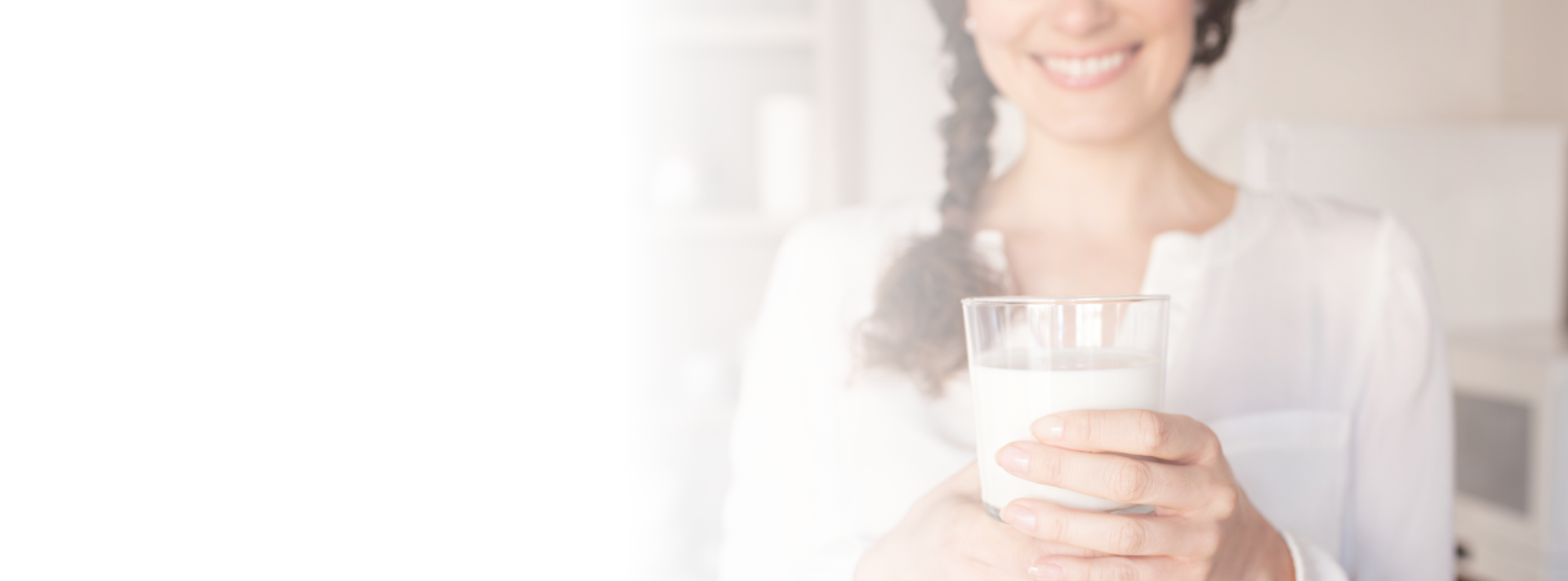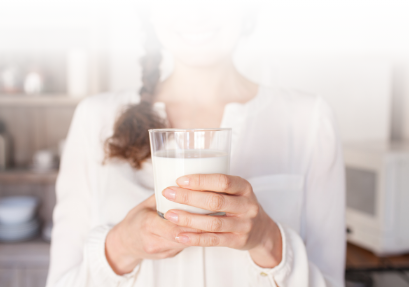Key Points
-
MFGM could only be quantified via some of its individual components such as sphingomyelin and phospholipids
-
MFGM components and their levels may vary in human breastmilk and in commercially available MFGM=supplement products
-
MFGM appear to confer beneficial effects to a larger extent than individually MFGM components constituted
MFGM in its entirety could not be quantified. Individual MFGM components are measured instead.1
Current analytical technologies are unable to quantify the entire MFGM structure with its matrix of complex lipids and proteins. Instead, individual components of MFGM are quantified with current commercially available and validated analytical methods.
Common MFGM components that are quantified for commercial use include phosphatidylcholine (PC), phosphatidylethanolamine (PE), phosphatidylserine (PS), phosphatidylinositol (PI), sphingomyelin (SM) and gangliosides (GG).
Total phospholipid and/or sphingomyelin are typically used as a marker to quantify the level of MFGM.


MFGM components in human breastmilk may vary between mothers.2,3
Human MFGM levels, as measured by sphingomyelin as a marker, range between 50 and 165 mg/L.13,14
Maternal factors that have been suggested to influence MFGM lipids include genetics, diet, lactation period and whether the infant is born preterm or term. Current clinical evidence, however, have not been clear on how these factors exactly influence MFGM lipids.3
Maternal factors that have been suggested to influence MFGM proteins include lactation period and environment exposure to microorganisms. Similarly, current clinical evidence have not been clear on how these factors exactly influence MFGM proteins.3
MFGM components consumed by healthy breastfed infants may thus differ in quantities.
MFGM-enriched ingredients in commercially available MFGM-supplemented products may vary as well.4,5
In the design of the nutrient profile of MFGM-supplemented final products, the manufacturers have to consider the key factors that influence the composition and the level of MFGM components during the manufacturing process. These factors include the type of mammalian milk used, the source of MFGM-enriched ingredients derived from the processing of the mammalian milk, and the process control in which the MFGM-rich ingredients is manufactured.
Among mammals, the composition and levels of MFGM components differ. Cow’s milk is commonly used to derive MFGM-enriched ingredients because its MFGM composition closely matches that of human MFGM.6
- SM: Sphingomyelin
- PC: Phosphatidylcholine
- PE: Phosphatidylethanolamine
- PS: Phosphatidylserine
- PI: Phosphatidylinositol
Milk Phospholipid Variability of Different Mammals (adapted from Kosmerl et al 2021)
MFGM-enriched ingredients are produced as byproducts in the commercial manufacturing of dairy products. These include MFGM whey from cheesemaking, buttermilk from butter making and beta serum from anhydrous milk fat making. MFGM whey, buttermilk and beta serum have different composition and levels of MFGM components.1
| MFGM-Enriched Ingredients | (g/100g Product) | Buttermilk | Beta Serum | Whey |
|---|---|---|---|
| Source/process | Butter | Anhydrous milk fat | Cheese whey |
| Protein (Nx6.38) | ≥30 | >52 | 73 |
| Lactose | ±50 | ≤10 | ≤3 |
| Ash | ≤9 | ≤6 | ≤3 |
| Total Lipids | 5-13 | 3-27 | 12-26 |
| Total Phospholipids (PL) (g/100 fat) | 1.6-22 | ≤14 | 5-16 |
| Phospholipids (% of total PL) | |||
| -Phosphatidyl ethanolamine (PE) | 35-43 | 22-29 | 19-41 |
| -Phosphatidyl choline (PC) | 19-32 | 27-47 | 19-25 |
| -Phosphatidyl serine (PS) | 8-18 | 1.2-23 | 8-12 |
| -Phosphatidyl inositol (PI) | 4-9 | 1-8 | 3.6-7 |
| -Sphingomyelin (SM) | 11-19 | 14-27 | 16-24 |
| -Others | - | <4 | ≤7 |
| Moisture | ≤4% | ≤5% | ≤6% |
| pH | 6.0-6.5 | 6.2-6.8 | 6.4S |
Composition of Commercially Available MFGM-enriched Ingredients (adapted from Fontecha et al 2020)
Regardless of the source of MFGM-enriched ingredients (i.e. MFGM whey, buttermilk or beta serum), the composition and levels of MFGM components could be adjusted to achieve the desired specifications of MFGM components in the final MFGM-supplemented products.1
In the packaging of MFGM-supplemented products, the ingredient source (i.e. whey, buttermilk, anhydrous milk fat) would be listed as ingredients and the markers of MFGM (e.g. phospholipids, sphingomyelin, gangliosides) listed in the nutrient profile.


MFGM appear to confer beneficial effects to a larger extent than individually MFGM components constituted.7,8
The evidence comparing the efficacy between MFGM in its entirety and individual MFGM components constituted together is very limited and confined to preclinical studies.
It is hypothesized that there is greater synergy among the components within the entire MFGM structure than individual MFGM components.
Paediatric MFGM-supplemented products are largely milk formulas
In paediatric MFGM-supplemented milk formulas, the MFGM is typically sourced from bovine-derived MFGM whey or buttermilk. 1
Total phospholipids and/or sphingomyelin may be reflected in the nutrient profile of paediatric milk formulas. However, sphingomyelin, and not total phospholipids, is typically used as a marker to quantify the level of MFGM in infant formulas. This is because
 MFGM is the predominant source of sphingomyelin
MFGM is the predominant source of sphingomyelin Other phospholipids (PC, PE, PS, PI) may come from vegetable oils, commonly used as a source of fats in infant formulas. Non-mammalian milk fats do not contain MFGM.
Other phospholipids (PC, PE, PS, PI) may come from vegetable oils, commonly used as a source of fats in infant formulas. Non-mammalian milk fats do not contain MFGM. There is reasonable knowledge of absorption and distribution of sphingomyelin upon consumption
There is reasonable knowledge of absorption and distribution of sphingomyelin upon consumption
Clinically meaningful level of bovine MFGM in infant milk formulas, as measured by sphingomyelin as a marker, is about 130 mg/L. This is the level studied in clinical trials that support brain, immunity and gut health. 9-11
There are variations in composition and levels of MFGM components across different infant milk formulas.4,5
Adult MFGM-supplemented products may include milk formulas, snacks and pills.12
Adult MFGM-supplemented products currently are commercially available as milk formulas and snack bars. Pill forms are currently available for research and have yet to be commercially available.
References
- Fontecha J, Brink L, Wu S, Pouliot Y, Visioli F, Jiménez-Flores R. Sources, Production, and Clinical Treatments of Milk Fat Globule Membrane for Infant Nutrition and Well-Being. Nutrients. 2020 May 30;12(6):1607.
- Lee H, Padhi E, Hasegawa Y, Larke J, Parenti M, Wang A, Hernell O, Lönnerdal B, Slupsky C. Compositional Dynamics of the Milk Fat Globule and Its Role in Infant Development. Front Pediatr. 2018 Oct 24;6:313.
- George AD, Gay MCL, Selvalatchmanan J, Torta F, Bendt AK, Wenk MR, Murray K, Wlodek ME, Geddes DT. Healthy Breastfeeding Infants Consume Different Quantities of Milk Fat Globule Membrane Lipids. Nutrients. 2021 Aug 25;13(9):2951.
- Brink LR, Herren AW, McMillen S, Fraser K, Agnew M, Roy N, Lönnerdal B. Omics analysis reveals variations among commercial sources of bovine milk fat globule membrane. J Dairy Sci. 2020 Apr;103(4):3002-3016.
- Manoni M, Di Lorenzo C, Ottoboni M, Tretola M, Pinotti L. Comparative Proteomics of Milk Fat Globule Membrane (MFGM) Proteome across Species and Lactation Stages and the Potentials of MFGM Fractions in Infant Formula Preparation. Foods. 2020 Sep 7;9(9):1251.
- Kosmerl E, Rocha-Mendoza D, Ortega-Anaya J, Jiménez-Flores R, García-Cano I. Improving Human Health with Milk Fat Globule Membrane, Lactic Acid Bacteria, and Bifidobacteria. Microorganisms. 2021 Feb 9;9(2):341.
- Brink LR, Gueniot JP, Lönnerdal B. Effects of milk fat globule membrane and its various components on neurologic development in a postnatal growth restriction rat model. J Nutr Biochem. 2019 Jul;69:163-171.
- He, Shenghua & Tang, Haishan & Peng, Fangshuai & Wang, Rongchun & Li, Qi & Ma, Ying. (2016). Effects of milk fat globule membrane and its individual components on dough properties and bread quality. RSC Adv.. 6. 10.1039/C6RA21611K.
- Timby N, Domellöf E, Hernell O, Lönnerdal B, Domellöf M. Neurodevelopment, nutrition, and growth until 12 mo of age in infants fed a low-energy, low-protein formula supplemented with bovine milk fat globule membranes: a randomized controlled trial. Am J Clin Nutr. 2014 Apr;99(4):860-8.
- Timby N, Hernell O, Vaarala O, Melin M, Lönnerdal B, Domellöf M. Infections in infants fed formula supplemented with bovine milk fat globule membranes. J Pediatr Gastroenterol Nutr. 2015 Mar;60(3):384-9.
- Zavaleta N, Kvistgaard AS, Graverholt G, Respicio G, Guija H, Valencia N, Lönnerdal B. Efficacy of an MFGM-enriched complementary food in diarrhea, anemia, and micronutrient status in infants. J Pediatr Gastroenterol Nutr. 2011 Nov;53(5):561-8.
- Raza GS, Herzig KH, Leppäluoto J. Invited review: Milk fat globule membrane-A possible panacea for neurodevelopment, infections, cardiometabolic diseases, and frailty. J Dairy Sci. 2021 Jul;104(7):7345-7363.
- Cilla A, Diego Quintaes K, Barberá R, Alegría A. Phospholipids in Human Milk and Infant Formulas: Benefits and Needs for Correct Infant Nutrition. Crit Rev Food Sci Nutr. 2016;56:1880-92.
- Claumarchirant L, Cilla A, Matencio E, Sanchez-Siles LM, Castro-Gomez P, Fontecha J, Alegría A, Lagarda MJ. Addition of milk fat globule membrane as an ingredient of infant formulas for resembling the polar lipids of human milk. Int Dairy J. 2016; 61:228-38.
- Fontecha J, Brink L, Wu S, Pouliot Y, Visioli F, Jiménez-Flores R. Sources, Production, and Clinical Treatments of Milk Fat Globule Membrane for Infant Nutrition and Well-Being. Nutrients. 2020 May 30;12(6):1607.
- Lee H, Padhi E, Hasegawa Y, Larke J, Parenti M, Wang A, Hernell O, Lönnerdal B, Slupsky C. Compositional Dynamics of the Milk Fat Globule and Its Role in Infant Development. Front Pediatr. 2018 Oct 24;6:313.
- George AD, Gay MCL, Selvalatchmanan J, Torta F, Bendt AK, Wenk MR, Murray K, Wlodek ME, Geddes DT. Healthy Breastfeeding Infants Consume Different Quantities of Milk Fat Globule Membrane Lipids. Nutrients. 2021 Aug 25;13(9):2951.
- Brink LR, Herren AW, McMillen S, Fraser K, Agnew M, Roy N, Lönnerdal B. Omics analysis reveals variations among commercial sources of bovine milk fat globule membrane. J Dairy Sci. 2020 Apr;103(4):3002-3016.
- Manoni M, Di Lorenzo C, Ottoboni M, Tretola M, Pinotti L. Comparative Proteomics of Milk Fat Globule Membrane (MFGM) Proteome across Species and Lactation Stages and the Potentials of MFGM Fractions in Infant Formula Preparation. Foods. 2020 Sep 7;9(9):1251.
- Kosmerl E, Rocha-Mendoza D, Ortega-Anaya J, Jiménez-Flores R, García-Cano I. Improving Human Health with Milk Fat Globule Membrane, Lactic Acid Bacteria, and Bifidobacteria. Microorganisms. 2021 Feb 9;9(2):341.
- Brink LR, Gueniot JP, Lönnerdal B. Effects of milk fat globule membrane and its various components on neurologic development in a postnatal growth restriction rat model. J Nutr Biochem. 2019 Jul;69:163-171.
- He, Shenghua & Tang, Haishan & Peng, Fangshuai & Wang, Rongchun & Li, Qi & Ma, Ying. (2016). Effects of milk fat globule membrane and its individual components on dough properties and bread quality. RSC Adv.. 6. 10.1039/C6RA21611K.
- Timby N, Domellöf E, Hernell O, Lönnerdal B, Domellöf M. Neurodevelopment, nutrition, and growth until 12 mo of age in infants fed a low-energy, low-protein formula supplemented with bovine milk fat globule membranes: a randomized controlled trial. Am J Clin Nutr. 2014 Apr;99(4):860-8.
- Timby N, Hernell O, Vaarala O, Melin M, Lönnerdal B, Domellöf M. Infections in infants fed formula supplemented with bovine milk fat globule membranes. J Pediatr Gastroenterol Nutr. 2015 Mar;60(3):384-9.
- Zavaleta N, Kvistgaard AS, Graverholt G, Respicio G, Guija H, Valencia N, Lönnerdal B. Efficacy of an MFGM-enriched complementary food in diarrhea, anemia, and micronutrient status in infants. J Pediatr Gastroenterol Nutr. 2011 Nov;53(5):561-8.
- Raza GS, Herzig KH, Leppäluoto J. Invited review: Milk fat globule membrane-A possible panacea for neurodevelopment, infections, cardiometabolic diseases, and frailty. J Dairy Sci. 2021 Jul;104(7):7345-7363.
- Cilla A, Diego Quintaes K, Barberá R, Alegría A. Phospholipids in Human Milk and Infant Formulas: Benefits and Needs for Correct Infant Nutrition. Crit Rev Food Sci Nutr. 2016;56:1880-92.
- Claumarchirant L, Cilla A, Matencio E, Sanchez-Siles LM, Castro-Gomez P, Fontecha J, Alegría A, Lagarda MJ. Addition of milk fat globule membrane as an ingredient of infant formulas for resembling the polar lipids of human milk. Int Dairy J. 2016; 61:228-38.








